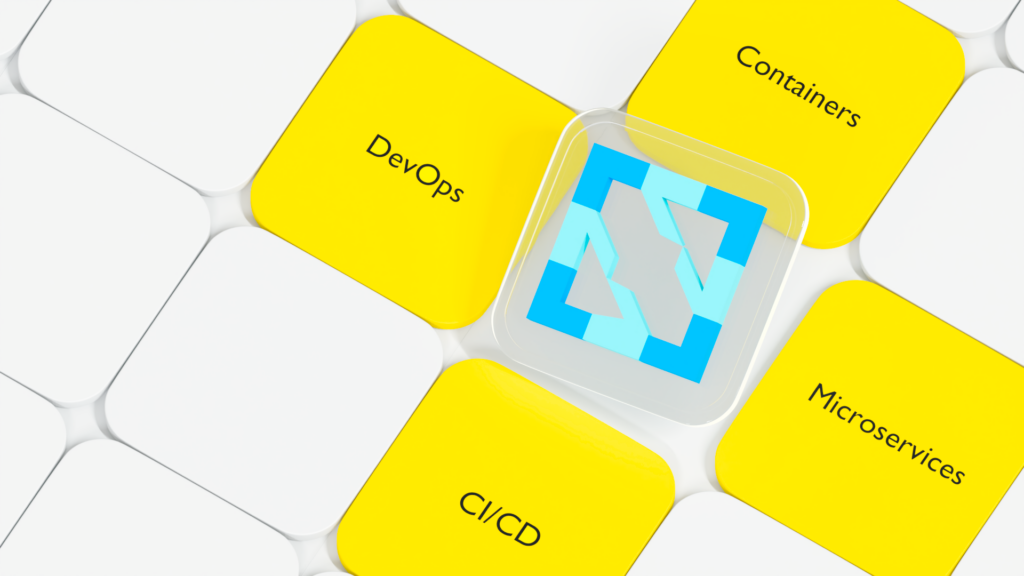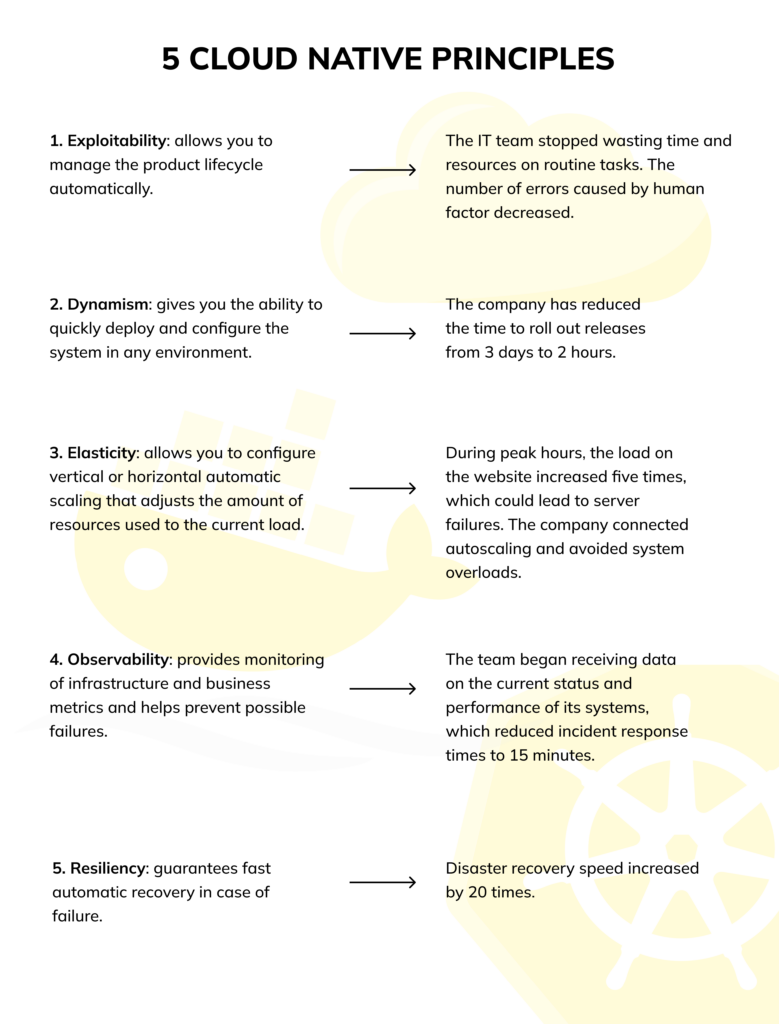Cloud Native

Cloud Native is an approach to building, deploying and managing software that utilizes cloud computing technologies. Its 5 core principles help companies evolve and adapt quickly to changes in the marketplace.

In fact, all properties and their resulting benefits are related to each other. Let’s try to talk about each property in more detail.
Exploitability
Exploitability means manageability with external tools. The foundation of this property is automation, along with which comes standardization.
With Exploitability, you can centrally manage all aspects of the application lifecycle, from deployment to monitoring. This reduces the risk of errors and resulting failures and downtime.
Automation increases the speed of software development and delivery to the final user. Tasks that could take hours to complete manually are completed in minutes. For example, you can customize CI processes so that automated testing of functionality runs in parallel during development.
Examples of implementing exploitability include using Kubernetes for container orchestration and implementing CI/CD using Jenkins, ArgoCD, GitLab.
Dynamism
Dynamism is the ability to rapidly deploy, configure, and update an application.
System dynamism is achieved using Infrastructure as Code (IaC). The essence of this approach is that infrastructure is described, modified and scaled through structured code.
Infrastructure as Code ensures consistent deployment, repeatability, and freedom from human error. IaC also speeds up the process of releasing new versions. For example, you can seamlessly deploy new features or patches without downtime thanks to the Rolling Updates principle, which allows you to update individual infrastructure components without impacting overall system performance. This is especially important for applications that are updated regularly and require a high level of fault tolerance.
Examples of tools that enable system agility include Terraform, Ansible, Cloudify, and AWS Cloud Formation.
Elasticity
It refers to the ability of a system to adjust the amount of IT resources utilized automatically to match the actual load at a given point in time. Elasticity as a property is especially important for applications with variable peak loads.
Here, quality monitoring of servers is significant: if the system notices that the load is out of the norm, it will instantly connect additional capacity.
The elasticity of the system allows you to decide how best to dispose of resources: to use them quickly or to use them sparingly. That’s why working with elasticity is one of the foundations of FinOps — financial management and optimization of cloud costs.
Docker and Kubernetes are classic examples of software for implementing elastic solutions.
Observability
Observability is more than just monitoring. It is a property that allows not only regular and comprehensive observation, but also system diagnosis.
The IT team can collect, analyze and visualize data with a set of dedicated tools: Prometheus and Grafana for metrics monitoring, ELK-stack for logging, and Jaeger and OpenTelemetry for distributed tracing.
Observability helps unify metrics, logging, and tracing come together in a cohesive way. Instead of manually searching for the cause of a failure across systems, engineers will get a complete picture of the incident at a glance. This reduces response time to failures by 2–3 times. Monitoring tools automatically alert the team to anomalies in application performance, making it possible to prevent potential failures before they impact the business. Also, analyzing metrics and logs helps to find optimization opportunities, for example, using ELK, you can see which queries most often become bottlenecks in the system.
Resiliency
Fault tolerance refers to the ability of a system to continue operating after the failure of one or more components and recover with minimal downtime.
To ensure that a failure in one component does not affect the performance of the entire system, it is necessary to provide isolation of each component. This is accomplished using a microservice architecture that is implemented using the Bulkhead pattern. This approach comes from shipbuilding practice, where bulkheads help prevent the entire ship from sinking if one section is damaged.
You can test the fault tolerance of the system through Chaos Testing.
If you would like to learn more about how implementing Cloud Native can improve your project specifically, please fill out the form below. We will get back to you within 24 hours.